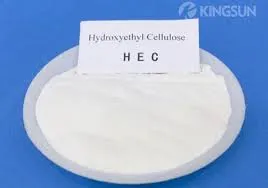
szept . 27, 2024 19:17 Back to list
hpmc hydroxypropyl methyl cellulose
Hydroxypropyl Methyl Cellulose (HPMC) A Versatile Polymer in Modern Applications
Hydroxypropyl methyl cellulose (HPMC) is a semi-synthetic polymer derived from cellulose, and it has emerged as an essential ingredient in various industries due to its versatile properties
. This article explores the characteristics, functions, and applications of HPMC, highlighting its significance in both pharmaceutical and industrial contexts.Understanding HPMC
HPMC is a non-ionic, water-soluble compound that is produced by the chemical modification of cellulose, a natural polymer found in the cell walls of plants. The process involves the introduction of hydroxypropyl and methyl groups into the cellulose backbone, significantly enhancing its solubility and stability in aqueous environments. HPMC is available in various grades, differentiated by their viscosity and the degree of modification, which determines their suitability for specific applications.
One of the most notable features of HPMC is its extraordinary ability to form gels and films when mixed with water. This gelling property makes HPMC an attractive option for formulations requiring enhanced viscosity, adhesion, or film-forming capabilities.
Applications of HPMC
1. Pharmaceuticals In the pharmaceutical industry, HPMC is widely used as an excipient and is crucial in the formulation of both solid and liquid dosage forms. It serves multiple functions, such as acting as a binder in tablet formulations, a thickening agent in suspensions, and a film-former for controlled-release applications. The ability of HPMC to modulate the release of active pharmaceutical ingredients (APIs) makes it invaluable in developing sustained-release dosage forms. This property helps enhance drug bioavailability and patient compliance, as it allows for less frequent dosing.
2. Food Industry In the food sector, HPMC is often utilized as a thickener, emulsifier, and stabilizer. It can improve the texture and mouthfeel of various food products, including sauces, dressings, and bakery items. HPMC also enhances moisture retention in baked goods, leading to prolonged freshness. Additionally, it serves as a fat replacer, which can contribute to healthier food formulations with reduced calorie content.
hpmc hydroxypropyl methyl cellulose

3. Construction HPMC plays a crucial role in the construction industry, particularly in cement and mortar formulations. It acts as a water-retaining agent, preventing the rapid evaporation of water and allowing for improved workability of cement mixtures. Its use enhances the adhesion of the materials, reduces cracking, and improves overall durability.
4. Cosmetics and Personal Care In cosmetic formulations, HPMC is used as a thickening agent, stabilizer, and film-forming agent. Its ability to create a smooth, gel-like consistency makes it suitable for lotions, creams, and gels, providing a desirable texture and enhancing the sensory experience. Moreover, HPMC's film-forming capabilities make it valuable in cosmetic applications like hair styling products, where it helps maintain hold without stiffness.
5. Agricultural Applications HPMC is increasingly being employed in agricultural formulations, particularly in the production of controlled-release fertilizers and pesticides. Its film-forming properties enable the creation of coatings that enhance the delivery and effectiveness of agricultural chemicals while reducing environmental impact through the controlled release of active ingredients.
Benefits of HPMC
HPMC provides a myriad of benefits across industries. Its non-toxic and biodegradable nature makes it a safe choice for pharmaceutical and food applications. Furthermore, its ability to perform well under varying pH and temperature conditions adds to its versatility, making it suitable for a wide range of formulations. Importantly, HPMC is resistant to microbial growth, which extends the shelf life of products containing it.
Conclusion
As industries continue to innovate and seek efficient solutions, hydroxypropyl methyl cellulose stands out as a robust polymer with diverse applications. Its adaptability and multifunctionality underpin its growing popularity across pharmaceutical, food, construction, cosmetic, and agricultural sectors. As ongoing research uncovers further potential applications and benefits, HPMC is likely to remain a cornerstone ingredient, fostering advancements in formulation technology and product development.
-
Versatile Hpmc Uses in Different Industries
NewsJun.19,2025
-
Redispersible Powder's Role in Enhancing Durability of Construction Products
NewsJun.19,2025
-
Hydroxyethyl Cellulose Applications Driving Green Industrial Processes
NewsJun.19,2025
-
Exploring Different Redispersible Polymer Powder
NewsJun.19,2025
-
Choosing the Right Mortar Bonding Agent
NewsJun.19,2025
-
Applications and Significance of China Hpmc in Modern Industries
NewsJun.19,2025







